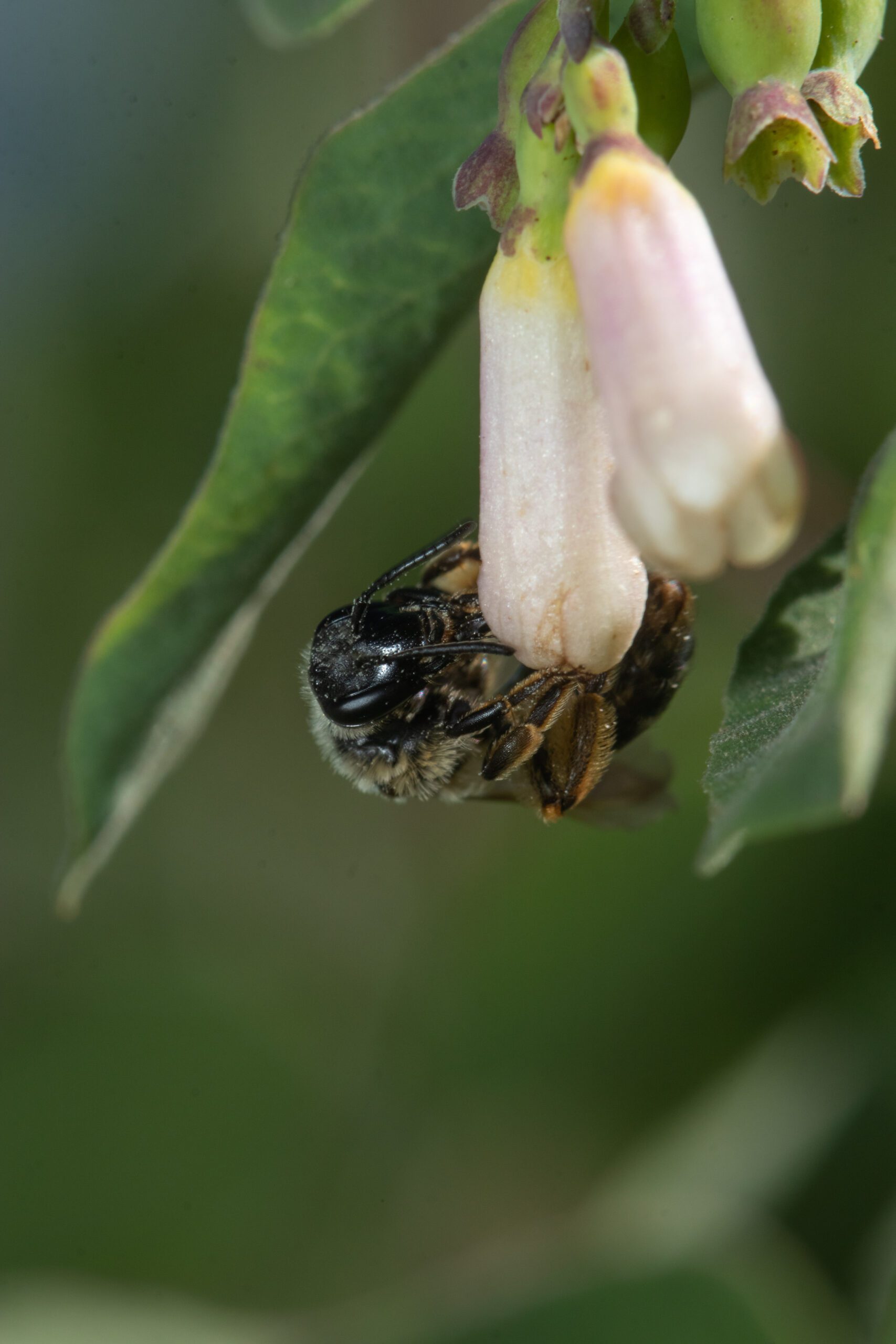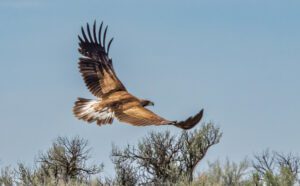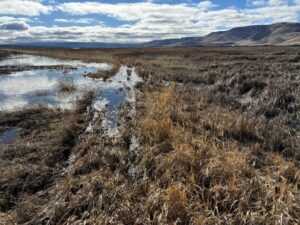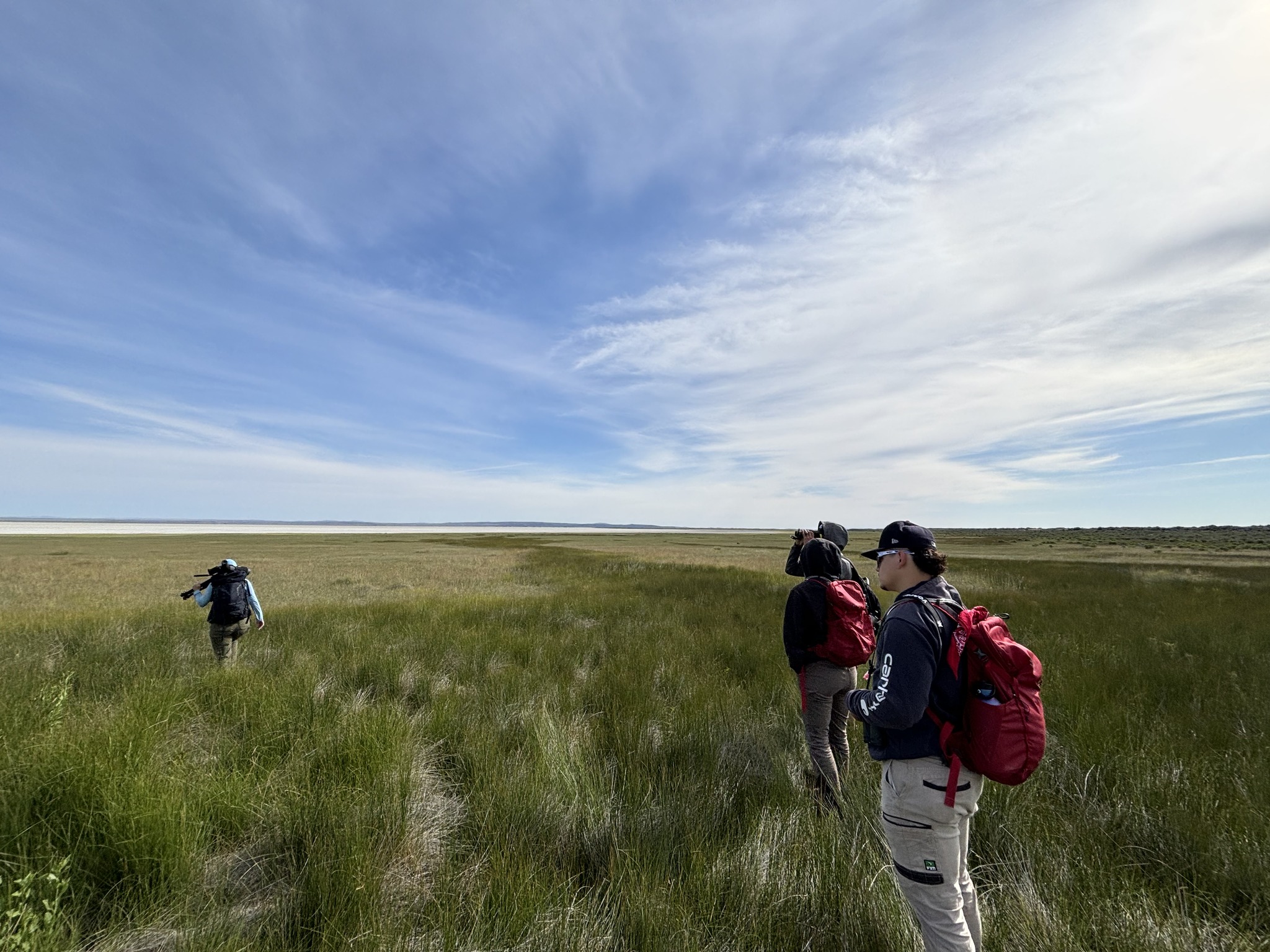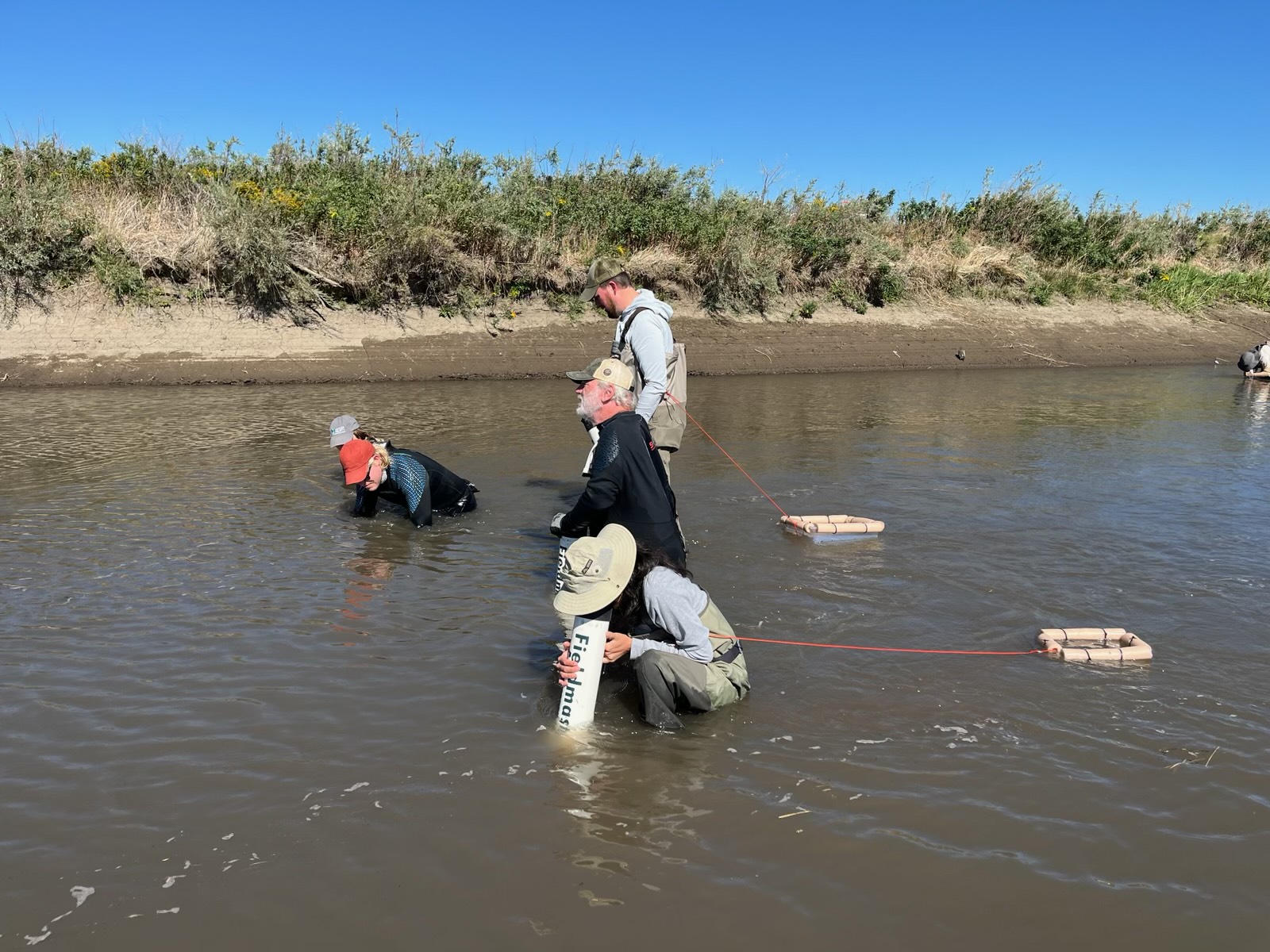Written by August Jackson, Oregon Bee Atlas
Photo of a mining bee by August Jackson
The Oregon Bee Atlas Master Melittologist Program is a community science initiative that trains volunteers to create and maintain a comprehensive and publicly accessible inventory of the state’s native bees and their plant-host preferences. This program conducts an on-going survey of native bee populations in order to assess their health. This has spawned associated efforts in Washington, Idaho, and British Columbia, which all utilize the Master Melittologist framework.
The Oregon Bee Atlas Master Melittologist Program has entered into a five-year cooperative agreement with the US Fish and Wildlife Service for inventory and monitoring of bees on National Wildlife Refuges in Pacific Region 1 (Oregon, Washington, and Idaho), beginning in 2024. Volunteers are starting to visit participating refuges, including Malheur, and are collecting data on the presence of native bee species and which plants they interact with. Rick Williams, of Bend, OR, has participated in the Master Melittologist program for a few years now and visited Malheur in the middle of May. Rick found a few bumble bee species around Refuge Headquarters, and found some early spring mason bee and mining bee species elsewhere around the Refuge. Many of the early spring mining bees are specialized and feed their young on pollen collected from only one or several closely related plants.
About a dozen volunteers spent time sampling the Malheur bee community over Memorial Day, and we look forward to sharing some of our findings in a later newsletter.

